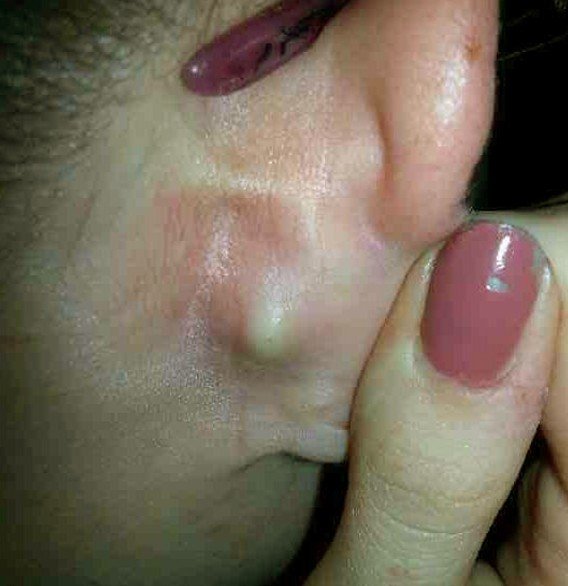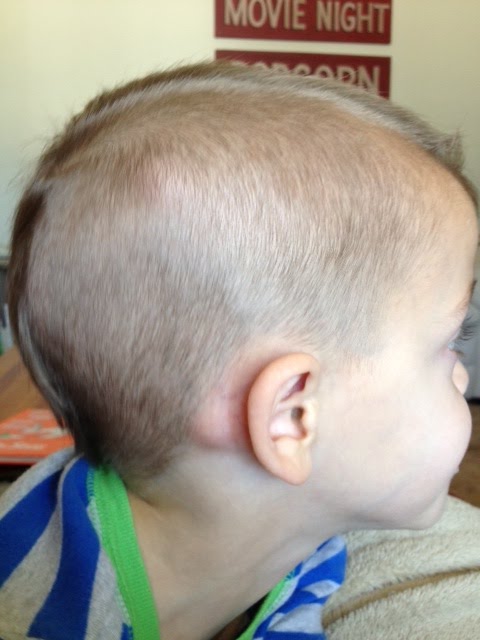

Lumps behind the ear usually aren’t harmful. You can connect to a physician in your area using the Healthline FindCare tool.Ī quick physical inspection of the area and a general checkup can usually help your doctor figure out exactly what is happening behind your ear.īased on what your doctor finds, they may suggest leaving the lump to go away on its own, or any number of treatments, from medication to surgery. If the lump is problematic, causing you pain or discomfort, or associated with other symptoms, make an appointment with your doctor. If so, the lump could be another sign of an infection.
In addition to the bump, are you experiencing other symptoms? Other symptoms could include fever or chills. Is the spot tender and painful, especially when touched? Then it could be a pimple or an abscess. Does the lump feel soft and pliable? If so, it’s probably a lipoma. Below are a few questions you can ask yourself: Your hand is your best tool for detecting lumps or bumps behind your ears. But for other people, figuring out what’s causing the raised area may be trickier. If you have a history of acne, it may be easy for you to diagnose a lump or bump behind your ear as a pimple. Seek immediate medical attention – your child will need antibiotics and might need the infection drained.Lipomas are not always detectable from the skin’s surface, but as they grow larger, it’s more likely that you’ll be able to feel them with your hand. BUMP BEHIND EAR SKIN
If this has happened, the gland will be large, the skin around it will be inflamed, and it will be very painful, especially when you press on it. In rare cases, a lymph node itself becomes infected by bacteria. If your child’s lymph nodes are swollen because of a bacterial infection, your child might need antibiotics. If your child’s swollen lymph nodes are caused by a viral infection, all you can do is treat the symptoms of the virus, like the sore throat and fever. Treatment will depend on what’s causing the swollen lymph nodes.
swollen lymph nodes and also seems very unwell. persistently swollen lymph nodes for many weeks and they aren’t getting smaller. swollen lymph nodes and weight loss, night sweats or bruising. swollen lymph nodes in the neck, fever, rash, changed skin colour on the hands and soles, and red lips and tongue – these might be the signs of Kawasaki disease. changes in skin colour over the swollen lymph nodes – for example, the skin is red, brown, purple or grey. pain or tenderness around the swollen lymph nodes. swollen lymph nodes in their neck and has trouble swallowing or breathing. swollen lymph nodes for a few days, and there’s no obvious reason for them, like a sore throat, runny nose or other mild infection. You should take your child to the GP if your child has: Does your child need to see a doctor about swollen lymph nodes? If your child is thin, you might even be able to see them. You can sometimes feel the ones on either side of the neck, the armpits and at the front of the groin where your child’s leg bends, even when your child is well. Lymph nodes can stay swollen for weeks after the infection or inflammation has cleared up.Ĭhildren’s lymph nodes are usually bigger than those of adults, so it’s easier to feel them. Sometimes lymph nodes can swell up to several centimetres in size. Or if they have a skin infection on their finger, there might be swollen and tender lumps under that arm. 
Lymph nodes might swell up all over your child’s body or just in the area near the infection or inflammation.įor example, if your child has tonsillitis, you might notice swollen and tender lumps in their neck. This is because germs more easily pass through their inflamed skin into their body and the lymph nodes help to get rid of them.Ĭancer is a rare cause of swollen lymph nodes in children.

Some young children with eczema have swollen lymph nodes all the time. Swollen lymph nodes can also happen if a part of your body is inflamed – for example, because of an abrasion, a burn or an insect bite.

Swollen lymph nodes happen most often when your body is fighting a viral or bacterial infection like a sore throat or glandular fever. Lymph nodes become swollen for many reasons. They filter your blood and kill any viruses and bacteria they catch. There are lymph nodes throughout your body.








 0 kommentar(er)
0 kommentar(er)
